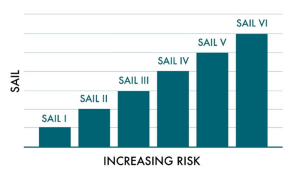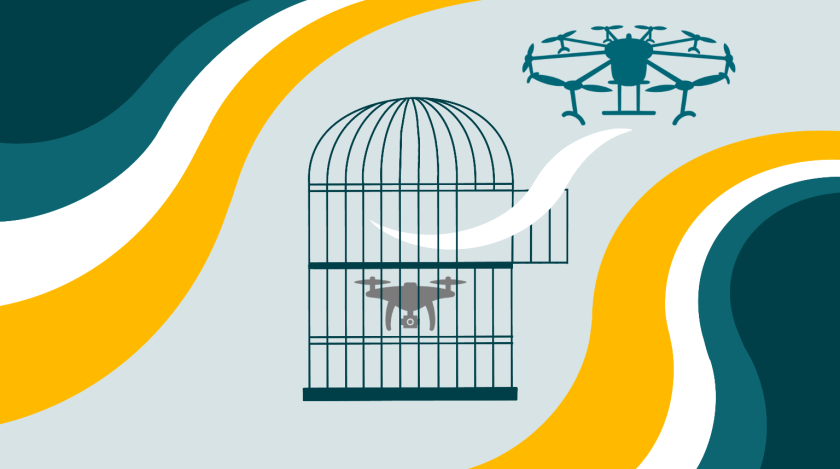By Nathanel Apter
EASA has published the Means of Compliance to Light-UAS.2512 and is currently externally consulting several Means of Compliance. But what are those Means of Compliance about and what is actually a Means of Compliance?
In aviation, specifications are written to regulate the design and manufacturing of aircraft. The Certification Specifications 23 (CS-23) for instance establishes requirements for smaller aircraft. Those Specifications have a wide scope since they cover a wide range of aircraft below a certain weight and size.
In order to provide legal certainty and to contribute in a uniform implementation of the law, EASA publishes Acceptable Means of Compliance (AMC) which are not binding but may be used to demonstrate compliance with the applicable requirements from the law. For instance, CS-23 Amendment 5 defines many standards which can be used as Acceptable Means of Compliance to the requirements of CS-23.
Since AMCs are non-binding, businesses may also decide to propose their own means to comply with the rules. This is also called an Alternative Means of Compliance (AltMoC) and has to be agreed upon with the competent authority.
In the context of drones, the Special Condition Light Unmanned Aircraft Systems (SC Light-UAS) – Medium Risk and High Risk were published in December 2020 and 2021 respectively. Those Specifications address the airworthiness specifications of drones operated in the specific category medium and high risk. The AMCs handling technical requirements from SC Light-UAS medium risk are called Means of Compliance or MoCs.
The Applicability of the Means of Compliance
MoCs have usually a rather well defined applicability. A Means of Compliance for drones smaller than 1 m is not necessarily applicable to larger drones.
Within the Specific Operations Risk Assessment (SORA) framework, it is paramount to actually understand the applicability of the Means of Compliance before making use of this MoC.
The SORA is a methodology developed by the Joint Authorities for Rulemaking of Unmanned Systems (JARUS) and used for drones risk analysis in order for the authority to understand whether a drone operator is going to operate safely. The SORA has been adopted by EASA as an Acceptable Means of Compliance to fly in the specific category. The JARUS SORA classifies the operation according to its risk on the ground and in the air. The Specific Assurance and Integrity Level (SAIL), which is a score between I and VI, is derived depending on the risks of the operation.
Some Means of Compliance may apply for lower SAILs and not for higher and vice versa. The applicability of the Means of Compliance should first and foremost be evaluated.

The Special Condition for Light Unmanned Aircraft Systems
Technical requirements from the SORA up to SAIL III will be verified by the national aviation authority while some elements may require a Design Verification from EASA. For SAIL IV, EASA will apply the process of Design Verification and verify compliance towards SC Light-UAS medium risk while SAIL V and VI will require a type certificate based on SC Light-UAS high risk.
This Special Condition for medium and high risk was published with the intent to have a more objective based certification specification. Earlier specifications were developed based on manned aircraft certification specifications which were rather prescriptive.
The Special Condition applies to drones that do not transport humans, for operations in the specific category with drones up to 600 kg and so its scope is rather large since it can apply to all kind of drones in many different situations.
The Means of Compliance with SC Light-UAS.2510
The Means of Compliance to SC Light-UAS.2510 is often perceived as the most significant Means of Compliance to complete the UAS regulation. It does only address the SC Light-UAS.2510 requirement but it is in relation with the system design and safety analyses to guarantee that there are no fatalities in case of a malfunction or a failure of one of the aircraft subsystems. This Means of Compliance is currently in external consultation until the 31st of August 2023 for SAIL IV and is yet to be written for SAIL III. This MoC is believed to provide a stronger legal certainty in the near future for operations over people in the EASA countries.
The currently proposed Means of Compliance for SAIL IV defines compliance by means of a Functional Hazard Assessment according to EUROCAE ED-280 and a Design and Installation Appraisal according to ASTM F3309-21. It further proposes a definition of the notion of loss of control and how to ensure an acceptable level of development assurance (DAL C).
The Means of Compliance with SC Light-UAS.2511
This Means of Compliance was published in May 2022 and defines a way to comply with the requirement of enhanced containment according to SORA. The Means of Compliance is of declarative nature whenever used in SAIL II, for drones up to 3 m characteristic dimensions and 34 kJ kinetic energy. Applicants can so declare compliance towards this MoC to their national aviation authority.
The MoC especially handles the topic of compliance towards enhanced containment using an independent Flight Termination System. It further describes how segregation of the system should take place and how the system should be tested (four test types). It is also of relevance for the size of the buffer zone within the SORA framework since it prescribes also the size of this zone whenever this Means of Compliance is used.
For operations of SAIL higher than II and for drones larger than 3 m, applicants will be able to use this MoC but EASA has to verify the compliance of the system and of the tests in a Design Verification Process.
The Means of Compliance with SC Light-UAS.2512
This Means of Compliance is a way to comply with the requirements of the SORA whenever using a risk reduction argumentation related to the lethality and/or the size of the critical area (area where the drone is lethal for third parties during a crash situation, M2 Mitigation) of the UAS. This Means of Compliance proposes three different types of approach:
- Risk reduction due to a 90% reduction of the nominal critical area
- Risk reduction due to a 90% lethality reduction (probability of causing a fatal injury)
- Combination of lethality and critical area reduction leading to a 90% risk reduction.
The document also offers 4 examples of type 1, 2 and 3 risk reduction whenever using a parachute or a reduction of kinetic energy.
This MoC can be declared but the applicant will have to support his claims with evidence as defined in the Means of Compliance.
The Functional Test Based Means of Compliance with SC Light-UAS
The Functional Test Based Means of Compliance with SC Light-UAS applies for operations with SAIL III or in agreement with EASA for a Design Verification. The MoC refers to the ASTM Standard F3478-20 on development of a flight demonstration program and defines that the UAS should be tested over 3000 FH for SAIL III.
The Means of Compliance also defines which requirements from SC Light-UAS such a flight demonstration program would show compliance against. We note that this MoC is a way to show compliance to many requirements from SC Light-UAS medium risk but does not cover the entire scope of the Special Condition.
The Means of Compliance with Light-UAS.2405, Light-UAS.2410 and Light-UAS.2615
Those MoCs are currently in external consultation until the 11th September 2023 and will be needed for SAIL IV Design Verification. Those Means of Compliance cover the Lift, Thrust and Power System. They refer to the ASTM Standard F3298-19 “Standard Specification for Design, Construction, and Verification of Lightweight Unmanned Aircraft System” for compliance demonstration.
Future Means of Compliance
With the recently developed and currently in development MoCs, it is becoming increasingly possible to have legal certainty around operations over people in Europe. There is however still some requirements from SC Light-UAS that do not yet have Means of Compliance and where the regulatory and standardization effort are still needed.




